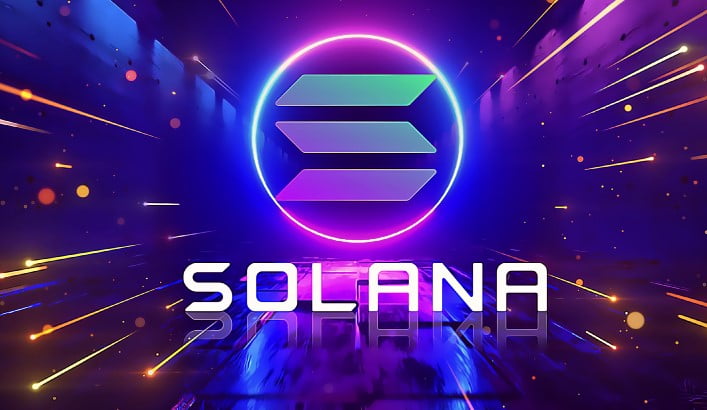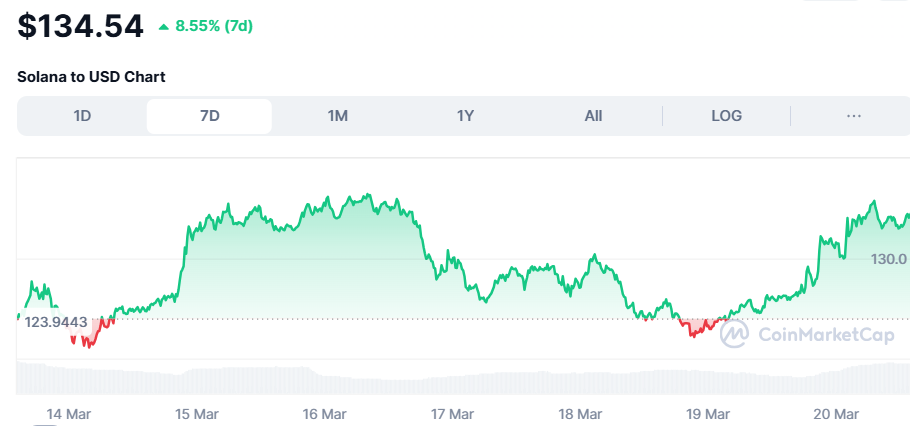As of March 2025, the cryptocurrency market continues to evolve, with Solana (SOL) and Cardano (ADA) standing out as two of the most innovative blockchain platforms. Both networks have made notable advancements, yet they differ in terms of technology, adoption, and investment potential. This article provides a comparative overview of Solana and Cardano, helping investors make informed decisions.
Technological Overview
Solana (SOL): The High-Speed Contender

- Consensus Mechanism: Solana combines Proof-of-History (PoH) with Proof-of-Stake (PoS), allowing for high-speed transactions and scalability.
- Performance: Capable of processing up to 3,000 transactions per second (TPS), making it significantly faster than many competitors.
- Programming Language: Supports multiple programming languages, including Rust and C, enhancing accessibility for developers.
Cardano (ADA): The Secure and Decentralized Approach
- Consensus Mechanism: Utilizes a pure Proof-of-Stake protocol known as Ouroboros, prioritizing security and energy efficiency.
- Performance: While currently supporting several hundred TPS, ongoing upgrades aim to enhance transaction capacity.
- Programming Language: Employs Haskell for smart contracts, emphasizing formal verification to ensure code reliability.
Decentralization and Network Health
Solana
- Validator Nodes: As of March 2025, Solana operates with around 1,000 validator nodes, providing high-speed transactions but raising concerns about decentralization.
- Network Reliability: Although Solana has faced network outages in the past due to high traffic and congestion, ongoing improvements aim to enhance stability.
Cardano
- Validator Nodes: Cardano operates with over 3,000 validator nodes, reinforcing its decentralized nature.
- Network Reliability: The platform has maintained strong uptime, with a methodical upgrade process ensuring reliability and minimal disruptions.
Market Performance and Adoption
Solana
- Market Capitalization: As of March 20, 2025, Solana’s market cap is estimated at $68 billion, ranking among the top five cryptocurrencies.
- Institutional Interest: Speculation about a potential Solana Exchange-Traded Fund (ETF) could drive further institutional investment.
- Ecosystem Growth: The network continues expanding in the decentralized finance (DeFi) and non-fungible token (NFT) sectors, with an increasing number of projects built on its blockchain.
Cardano:

- Market Capitalization: Cardano’s market cap stands at approximately $25.7 billion, reflecting steady growth and investor confidence.
- Government Endorsement: A proposal by former U.S. President Donald Trump to include Cardano in a strategic crypto reserve has highlighted its potential significance.
- DeFi and Smart Contracts: The ecosystem is steadily growing, with multiple projects aiming to position Cardano as a strong competitor to Ethereum and Solana.
Recent Price Fluctuations
Solana (SOL):

From: Coin Market Cap
- Price Surge: SOL’s price surged to $180 following an announcement on March 2, 2025, regarding its potential inclusion in a U.S. crypto reserve.
- Correction Phase: The price later corrected, stabilizing at $134 by March 20, 2025.
- Volatility: Due to network activity and macroeconomic conditions, Solana remains attractive for short-term traders but volatile for conservative investors.
Cardano (ADA):

From: Coin Market Cap
- Notable Rally: ADA saw an 80% price increase between March 2 and 3, 2025, peaking near $1.
- Current Trading Level: By March 20, 2025, ADA had stabilized at around $0.7312.
- Lower Volatility: Compared to Solana, Cardano exhibits less price volatility due to its structured development roadmap and strong community backing.
Development Roadmap and Future Outlook
Solana
- Layer-2 Scaling: New Layer-2 solutions aim to enhance scalability and reduce congestion.
- Cross-Chain Integration: The network is working on interoperability to allow seamless connections with other blockchains.
- Security Upgrades: Upcoming enhancements focus on improving security and network stability to minimize outages.
Cardano
- Hydra Scaling Solution: Expected to significantly increase transaction processing capabilities, making Cardano more competitive in the smart contract space.
- Global Adoption Initiatives: Ongoing partnerships with governments and organizations to promote blockchain adoption in emerging markets.
- Research-Driven Development: Unlike Solana’s rapid expansion, Cardano follows a gradual, research-oriented approach to innovation.
Investment Considerations
Who Should Consider Investing in Solana?
- Traders Seeking Speed: High transaction speeds and low fees make Solana appealing for high-frequency traders.
- Developers: The diverse programming language support and expanding ecosystem attract decentralized application (dApp) developers.
- Short-Term Investors: The volatility of Solana’s price may present trading opportunities for investors willing to take risks.
Who Should Consider Investing in Cardano?
- Long-Term Investors: Those prioritizing decentralization, security, and a methodical development approach may prefer Cardano’s steady growth model.
- Stakeholders: Cardano’s pure PoS mechanism offers staking rewards, making it attractive for those looking to participate in network validation.
- Risk-Averse Investors: Given its strong foundation and careful approach, Cardano may appeal to investors seeking long-term stability.
Conclusion: Which Blockchain Holds the Edge?
The choice between Solana and Cardano ultimately depends on an investor’s risk tolerance, investment strategy, and belief in each network’s long-term viability.
- Solana is ideal for those seeking speed, ecosystem expansion, and short-term market opportunities. However, concerns over network stability and volatility may deter risk-averse investors.
- Cardano appeals to investors focused on security, decentralization, and a well-structured development roadmap. Although its adoption has been gradual, its research-backed approach fosters long-term sustainability.
Both networks have distinct advantages and challenges, and diversification may be a prudent strategy for investors looking to balance risk and reward. Staying informed about market trends and conducting thorough research remain key to making sound investment choices.
Disclaimer: Cryptocurrency investments involve significant risks. This article is for informational purposes only and does not constitute financial advice. Investors should conduct their own due diligence before making any investment decisions.




